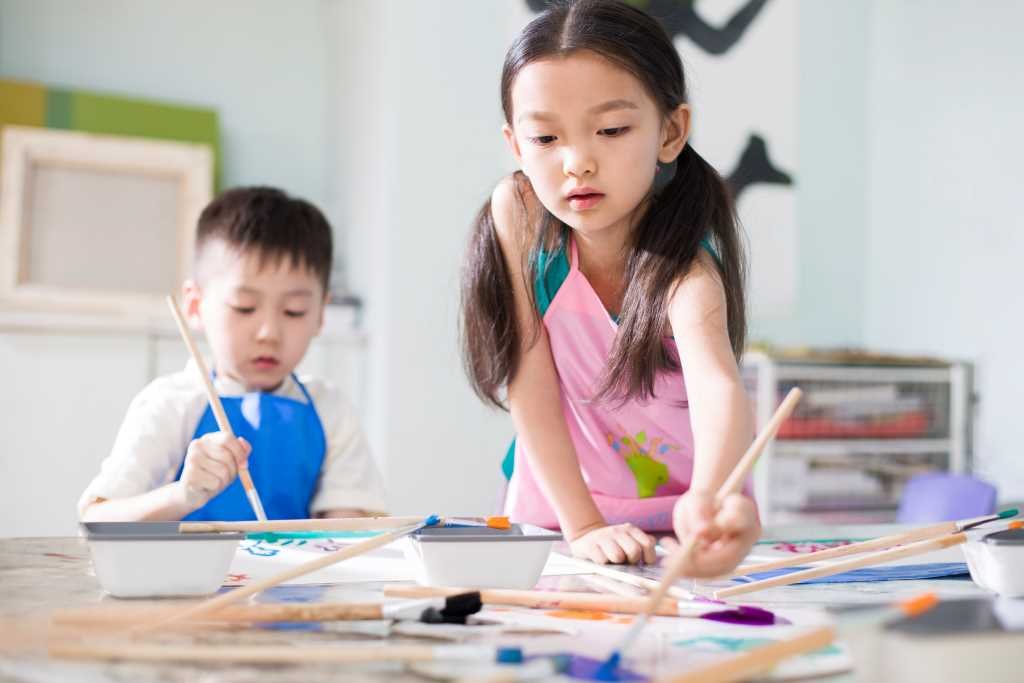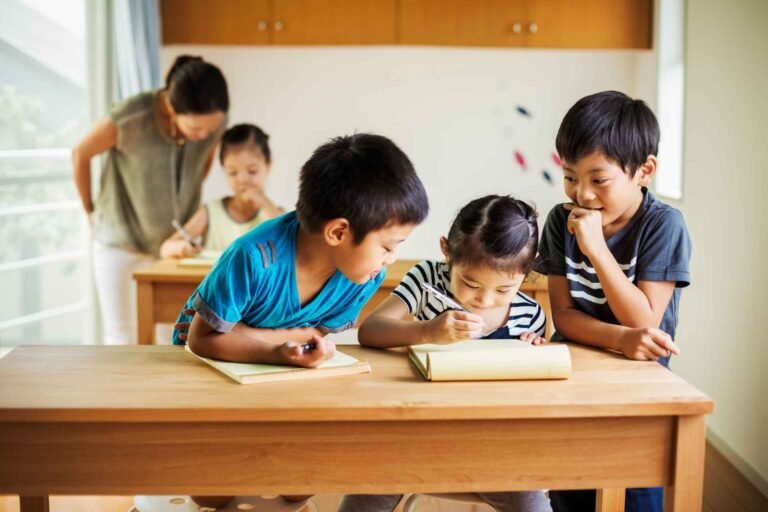Home » The Sycamore Center for Progressive Education Curriculum » Grade 1 Curriculum: Introduction to the World Cultures
Grade 1 Curriculum: Introduction to the World Cultures
Major Subjects: Bible, History, English, Filipino, Science, Math
Minor Subjects: Music and Art, Health, Physical Education, Technology and Livelihood Education


CORE SUBJECT
Bible 01
Learning Outcomes:
More specifically, learners are expected to exhibit cognitive, affective, and kinesthetic competencies as manifested in the following outcomes:
- Listen to the stories of the Bible, from the Old Testament to the New Testament, with an open and accepting heart.
- Retell the stories of the Bible to include the main lessons and values learned.
- Relate and reflect on the values and characteristics of the Bible characters to one's own life and experiences.
- Accept and understand that all the contents of the Bible are true and unchanging about God.
- Practice the good values of the characters of the Bible in applying it to one's own life.
- Develop a strong faith as the student learns more about God and Jesus.
- Develop the habit of praying spontaenously to God throughout the day.
- Develop love and compassion for others as a product of faith.
- Learn how to find the book, chapter, and verses in the Bible.
Student References / Workbooks
- The Beginner’s Bible: Timeless Children’s Stories (Revised ed.). Zonderkidz.
CORE SUBJECT
History and Geography 01
Introduction to World Cultures
Learning Outcomes:
More specifically, learners are expected to exhibit cognitive, affective, and kinesthetic competencies as manifested in the following outcomes:
- Recall important personalities and historical events that took place in the past and present to emphasize their relevance through timeline figures, current events, and discussion;
- Trace and plot relevant geographical locations (i.e. Europe, Asia, Africa, and the Americas) to relate them to historical events and cultures discussed in class using world maps;
- Examine how different societies based on geography, people, culture, religion, values, and beliefs through discussion and collaborative work to understand how geography influences human behavior and culture;
- Manipulate craft materials to better appreciate the different architecture, tools, jewelry, etc. present in the different civilizations and cultures discussed;
- Empathize with the different cultures across different time periods and locations to gain appreciation of various historical and cultural heritage through group discussion, role playing and games;
- Generate their own ideas on how different cultures and societies are interrelated and how this relates to their present way of life through discussions, role playing, and essay writing;
- Have deeper appreciation of the world around them by being respectful of cultural diversity, by comparing and contrasting different societies based on people, culture, religion, values, and beliefs; and to
- Develop a sense of responsibility for the environment, society, and the world we live in through real-life application, integration in, and collaboration with other disciplines.
Student References / Workbooks
- Usborne Children’s Encyclopedia, Felicity Brooks, et. al, 2014
- Usborne Book of Living Long Ago, Felicity Brooks, et. al, 2014
LANGUAGE SUBJECT
English 01
Language Arts, Phonics, Reading, and Writing
This course teaches reading, writing, and grammar skills to help students write independently and improve their reading comprehension. They will learn to identify parts of speech, analyze stories for better understanding, and apply basic writing conventions.
Learning Outcomes:
More specifically, learners are expected to exhibit cognitive, affective, and kinesthetic competencies as manifested in the following outcomes:
- Fluently read level-appropriate words and sentences in order to critically comprehend narrative and informational text through explicit and incidental phonics instruction.
- Develop oral and written communication skills to critically and creatively respond to stories (both read-aloud and read independently) through discussions, written compositions, and art activities.
- Use phonics skills and beginning reading strategies to form conclusions and recreate new ideas through semantic mapping, brainstorming, discussions, written output and other creative output.
- Acquire a solid foundation of phonemic awareness and word-building skills which is important for spelling and vocabulary through interactive learning, deliberate word instruction, and exposure to various genres of age-appropriate literature.
- Be aware of grammatical conventions and structures by using language correctly and in context through exposure to correct language, direct instruction, and practice.
Student References / Workbooks
- I Can Read It! Book 2 by John Holzmann
- Little Bear by Else Holmelund Minarik
- Steps to Functional Writing 1 by Virginia E. Antonio
LANGUAGE SUBJECT
Filipino 01
Pagbasa, Pagsulat at Wika 1
Ginagamit ang Filipino sa pag-unawa at pagpapahayag ng kaalaman, ideya, at damdamin na may paggalang sa kultura. Sa pagtatapos ng Unang Baitang, inaasahang maipapahayag ng mga mag-aaral ang kanilang pag-unawa sa mga tekstong binasa o napakinggan, at nagagamit ang kaalaman sa wika para sa mabisa at maayos na pagpapahayag.
Learning Outcomes:
- Naipapamalas ang kakayahan sa mapanuring pakikinig at pag-unawa sa napakinggan.
- Naipapamalas ang kakayahan at tatas sa pagsasalita at pagpapahayag ng sariling ideya, kaisipan, karanasan, at damdamin.
- Nauunawaan ang ugnayan ng simbolo at mga tunog.
- Naipapamalas ang kamalayan sa mga bahagi ng aklat at kung paano ang ugnayan ng simbolo at wika.
- Naipapakita ang iba't ibang kasanayan upang makilala at mabasa ang mga pamilyar at di pamilyar na mga salita.
- Nagkakaroon ng pagpapaunlad ng kasanayan sa wasto at maayos na pagsulat.
Student References / Workbooks
- Filipino: Isang Hamon 1
- The Filipino Odyssey 1
STEM SUBJECT
Science 01
Earth, Animals and Plants, and Space
Learning Outcomes:
- Show understanding of the animal and plant kingdom by describing, comparing and contrasting, classifying , identifying, giving examples, and illustrating based on their characteristics.
- Apply and strengthen one's knowledge of Earth and nature by conducting experiments, observing, collecting and recording information, and presenting solutions to improve or participate in the improvement of our world.
- Develop a sense of curiosity through activities that involve observation, asking questions, and analyzing data.
- Engage in social responsibility to create solutions in response to current environmental problems through discussion, video recordings, illustration, research, and other hands on activities.
- Create and practice own ideas and ways how to use and take care of the Earth and its resources.
- Be more aware and responsible of the importance of living and non-living things around them which will lead them to care for, and conserve, these resources.
- Exhibit knowledge of the science topics by illustrating and making simple models to show understanding of parts and processes.
Student References / Workbooks
- Children’s Encyclopedia New Edition. Usborne Books
- Tadpoles & Frogs – Usborne Beginners (New edition). Usborne Publishing Ltd.
- Caterpillars And Butterflies – Usborne Beginners (New edition). Usborne Publishing Ltd.
- Eggs and Chicks (Beginners Nature, Level 1). Usborne Pub Ltd.
STEM SUBJECT
Mathematics 01
Foundation of Mathematics 1
Learning Outcomes:
More specifically, learners are expected to exhibit cognitive, affective, and kinesthetic competencies as manifested in the following outcomes:
- Demonstrate adequate understanding of numbers, number sense, geometry, patterns, algebra, measurement, basic statistics, and probability through both digital and experiential learning such as discussions, games, hands-on activities, and manipulatives to name a few;
- Recognize equal number of objects, number words from 0-120, as well as ordinal and cardinal numbers;
- Apply basic addition and subtraction facts when solving number sentences and word problems using concrete materials (models and/or manipulatives), physical actions, pictures, and diagrams, measuring devices and electronic devices;
- Analyze whole numbers from 0-120 through comparison using the terms same, more, fewer, greater than, less than, equal to, greatest, and least;
- Evaluate the standard and non-standard units of length, mass, and capacity;
- Identify and analyze two-dimensional and three-dimensional shapes and their attributes;
- Solve mathematical and number problems involving addition and subtraction of two-digit whole numbers, figures, patterns, measurement, and time to the hour and half hour;
- Solve mathematical and number problems involving addition and subtraction of two-digit whole numbers, figures, patterns, measurement, and time to the hour and half hour;
- Show understanding of data by identifying, collecting, organizing, and interpreting pictographs, bar graphs, and tally charts;
- Generate projects or tangible ideas of mathematical principles and concepts that highlight student understanding and learning experience;
- Develop values of teamwork, cooperation, confidence, honesty, sportsmanship, etc. as mathematical concepts are applied in real life situations.
Student References / Workbooks
- Math 7 A Teaching Textbook by Greg and Shawn Sabouri

